WDFW releases mixed bag forecast for Chinook and coho, while two sockeye runs could be a boon for summer fisheries Leave a reply
Initial salmon forecasts are just the first step during this long two-month salmon season setting process where fishery managers create 2024-25 fisheries
Contributed by Mark Yuasa, WDFW
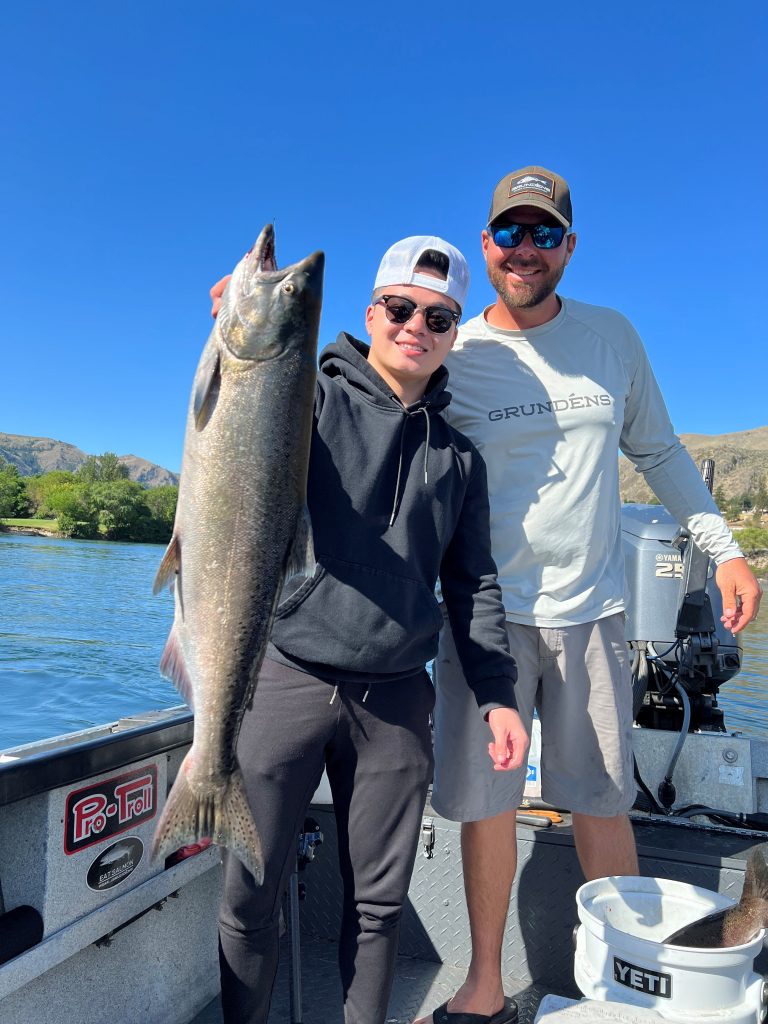
All eyes are focused on what the future holds for the 2024-25 recreational salmon fishing seasons, and while anglers should find opportunities there’ll likely issues to overcome due to low forecasts that will limit time on the water.
WDFW fishery managers today (March 1) unveiled the 2024 salmon forecasts at a public meeting in Olympia and how they’ll come into play when creating recreational salmon fisheries is still a long ways down the road.
That long winding road is a two-month season-setting process known as North of Falcon, a term referring to waters north of Oregon’s Cape Falcon, which marks the southern border of management of Washington’s salmon stocks. This includes Puget Sound, Strait of Juan de Fuca, Columbia River, and coastal Washington salmon stocks.
State fishery managers use a suite of scientific data, including watershed sampling and monitoring, ocean indicators, and previous year returns, to estimate the number of salmon returning and decipher how many fish are available to catch.
The highlight for the Puget Sound region will likely be another strong sockeye return to the Baker Lake summer sockeye fishery could be the beacon of light and in 2023 the fishing season was relatively good and the return to the Baker River – a tributary of the Skagit River near Concrete – waxed expectations. The 2024 Baker sockeye forecast is up 57% over the recent 10-year average.
The Baker River sockeye forecast is 56,750 in 2024 up from a 2023 forecast of 31,296 and an in-season estimate of 65,000. Other forecast comparisons include 27,081 in 2022, 12,253 in 2021, 13,242 in 2020; and 33,737 in 2019. The all-time low occurred in 1985 when less than 100 sockeye returned to the Baker River.
The 2023 record adult sockeye return marked the fourth year in a row that the Baker run exceeded expectations. The main variables that can’t be controlled are the environmental factor that include ocean and freshwater conditions that fluctuate from year-to-year.
A fish trap on the Baker River operated by Puget Sound Energy (PSE) is used to capture sockeye. Fish caught in the trap are used to achieve spawning goals at the hatchery or released to allow natural spawning and the remainder are trucked to Baker Lake to provide sport fishing opportunities.
WDFW, tribal co-managers and PSE have collaborated to increase young sockeye production at the hatchery as well as a floating surface collector that has been in place since 2008 and increased survival rates.
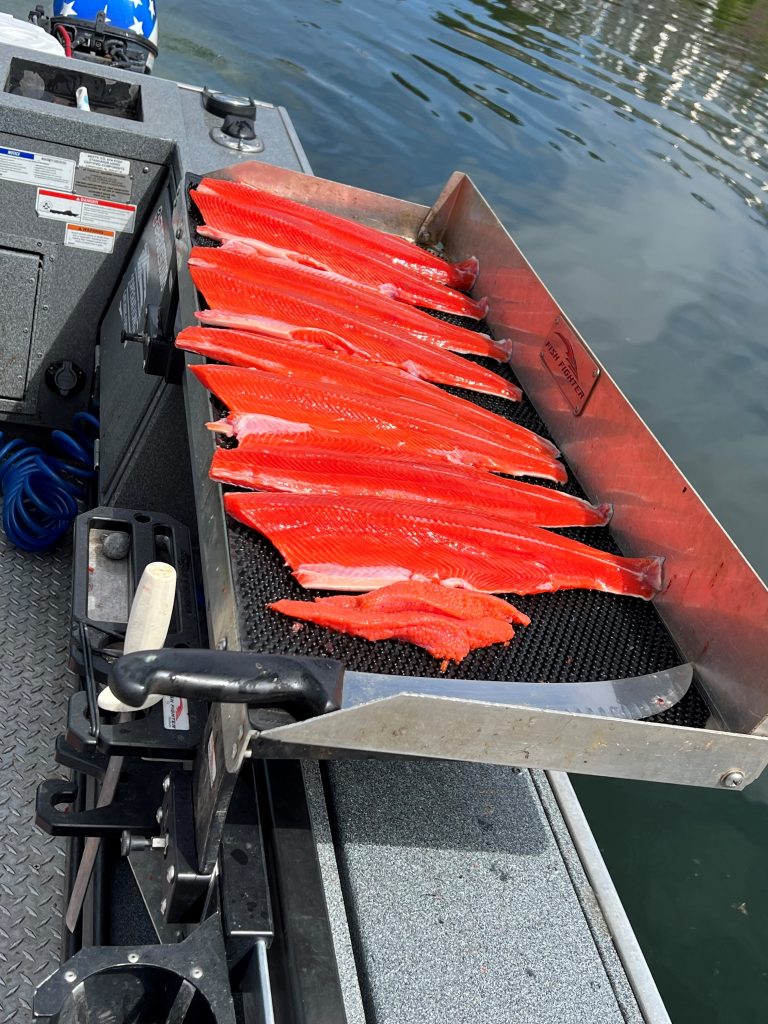
Looking at the overall picture the Puget Sound-wide coho forecast shows hatchery and wild returns are up from the 10-year average and includes 2015 when the runs crashed. The Snohomish River system coho returns have struggled in recent years but is now out of the rebuilding stage.
In the Strait of Juan de Fuca, most coho stocks are still in a rebuilding status but improved from 2023 and could play into how fishing seasons in the Strait are structured. In southern Puget Sound, coho returns are a mixed bag with some up while others are down. In Hood Canal, both wild and hatchery coho forecasts are up.
In the southern portion of British Columbia, the Thompson River coho are still a concern and will likely play in how seasons are structured especially in the northern regions.
The combined Puget Sound hatchery and the wild coho forecast is 722,134 which is down from 760,029 in 2023. In comparison with other years, it was 636,952 in 2022; 614,948 in 2021; 504,604 in 2020; 708,521 in 2019; and 557,149 in 2018.
In the Puget Sound region, wild coho returns are expected to be down in the Elwha, 1,621 (3,456 in 2023) and total wild and hatchery return is 5,889 (7,122 in 2023); Green, 1,261 (12,779) and 88,614 (110,756); Puyallup, 9,543 (16,524) and 26,958 (37,023); and Skokomish, 1,157 (2,237) and 28,933 (26,609).
Coho hatchery returns expected to be down in 2024 for the Stillaguamish, 903 (1,744 in 2023); Snohomish, 34,728 (63,994); and Nisqually, 3,623 (7,467).
In general, Puget Sound chum returns are improved over the 2019 and 2020 forecasts, but they pale in comparison from 2013 to 2018 when the combined forecasts were close to or above 1.5-million mark.
The 2024 fall Puget Sound/Hood Canal chum prediction is 818,793 (650,618 in 2023; 723,611 in 2022; 525,604 in 2021; 874,307 in 2020; and 1,035,835 in 2019).
In Hood Canal, the chum forecast is 254,900 (231,153; 306,488; 273,396; 471,810; and 518,645) and southern Puget Sound is 310,108 (231,137; 189,460; 121,078; 309,573; and 263,171). Other forecasts are 25,317 for Nooksack/Samish (34,025 in 2023); 22,953 for Skagit (5,823); 9,112 for Stillaguamish (15,449); 15,707 for Snohomish (11,814); 176,454 for central Puget Sound (109,081); and 4,242 for Strait of Juan de Fuca (2,136).
One Puget Sound region where sockeye continue to struggle is Lake Washington where the forecast is 19,574 down from 21,851 in 2023 but up from 10,165 in 2022. Other yearly forecasts were 24,807 in 2021, 20,166 in 2020 and 15,153 in 2019. The lake’s spawning escapement goal is 350,000 before any fisheries can be considered.
The last time Lake Washington was open for sport fishing was 2006 when 453,543 returned. Since then, the run dipped dramatically to 25,123 in 2018 and 22,165 in 2009, but had 100,000-plus returns in 2017, 2013, 2012 and 2010.
Despite ramped up hatchery production at the Cedar River’s Landsburg Hatchery facility to mitigate the loss of sockeye, state, tribal and City of Seattle fishery biologists have worked on alternative ways to help boost recovery that included capturing and transporting fish from the Ballard Locks to the hatchery. A return of more than 38,000 in 2021 was the most since 2017.
Early indications by WDFW show this bypass has been a success but only time will tell. For many years, sockeye have been taken from the fish weir at the Cedar River mouth and transported directly to the hatchery to boost survival too.
There’s still a myriad of barriers sockeye need to deal with from smolt predation in the lake by cutthroat trout, bass, yellow perch and northern pikeminnows as well as increased pre-spawn mortality rates, and extremely warm water, disease and low dissolved oxygen levels in the Lake Union Ship Canal and Lake Washington.
North of the border in British Columbia, the Fraser River sockeye forecast is 567,000 down from 1.6 million in 2023.
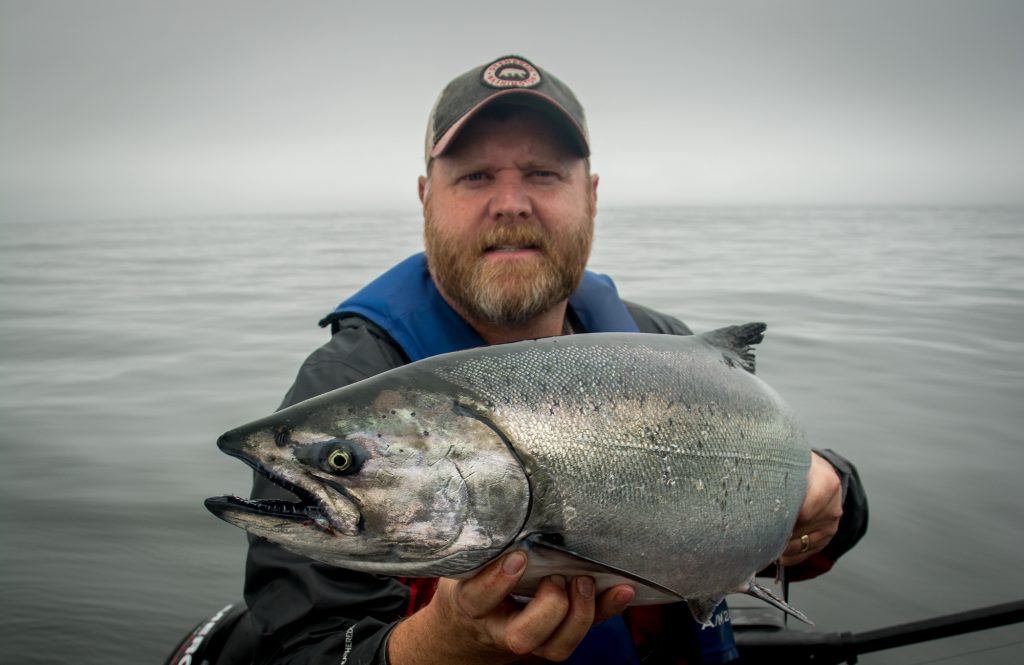
Chinook salmon fisheries are the most prized among anglers, and the 2024 fall Chinook forecasts mostly range from neutral to good for Puget Sound and neutral off the coast. The total 2024 Puget Sound fall Chinook forecast is 251,333 (223,179 are hatchery and 28,154 are wild). On the coast, the total 2024 fall Chinook forecast is 73,181 (36,437 are hatchery and 36,744 are wild).
The 2024 Puget Sound hatchery Chinook forecasts are up 24% and the wild stock is down 6% over the recent 10-year average adult return. Compared to the 2023 Puget Sound forecast, the hatchery return is down 3% and the wild is down 5%. The good news is the total Puget Sound Chinook 2024 forecast is up 17% from the 10-year average run-size and down 3% from the 2023 forecasts.
The coastal Chinook forecast for hatchery stock is down 7% and wild is up 2% over the recent 10-year average adult return. Compared to the 2023 forecast, the hatchery stock is down 13% and the wild stock is down 5%. The total Chinook forecast is down 3% from the 10-year average run-size and 9% from the 2023 forecast.
In northern Puget Sound, the Skagit Chinook continues to see weak forecasts in recent years although 2022 was stronger than predicted and 2023 were like expectations. The Samish continues to have a good hatchery Chinook return. The Snohomish would Chinook forecast in 2024 is down relative to last year, but the hatchery forecast was good again in 2023. The Stillaguamish remains in a poor status and continues to be a primary issue to many fisheries with the 2024 return mirroring 2023 and 2022 return were relatively high. In Hood Canal, the hatchery Chinook forecast will resemble 2023. The Nisqually, one the key driver for mid- and deep-South Puget Sound fisheries and has seen a reduced in-river sport fishery in recent years, and despite an improved forecast relative to 2023 and likely to impact fisheries in 2024.
The 2023 Puget Sound-wide wild Chinook forecast is 29,913 (25,872 in 2023, 28,992 in 2022 and 26,918 in 2021) and the hatchery forecast is 214,115 (209,352 in 2023, 201,059 in 2022 and 202,185 in 2021).
The 2024 northern coastal Chinook forecast is 42,335 age three- to five-year-old fish (34,434 are wild) compared to 51,509 (36,320) in 2023. The 2024 Willapa Bay Chinook forecast is 30,864 (3,519 are wild) compared to 30,320 (2,833) in 2023.
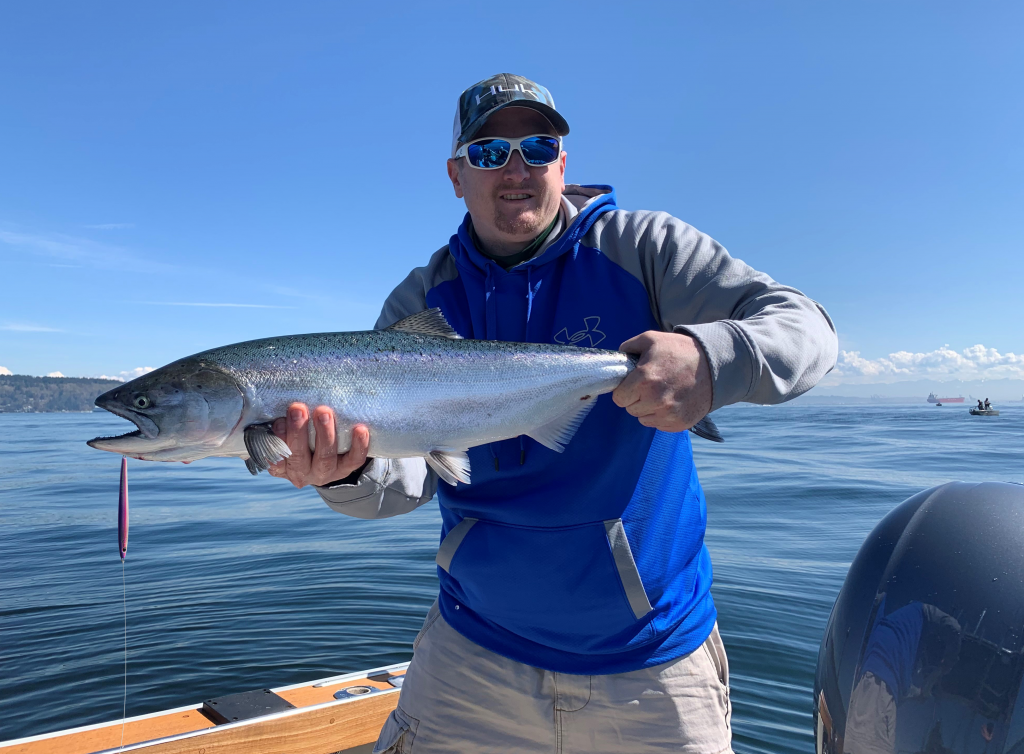
On the coast, both wild and hatchery coho forecasts in 2024 are down and calls for 392,998 (519,330) in 2023. A breakdown of the hatchery forecast is 235,041 (302,643 in 2023) and the wild forecast is 157,957 (216,687).
On the northern coast, the 2024 Quinault coho forecast is 60,006 (54,161 in 2023); Queets is 31,720 (27,320); Hoh is 4,870 (6,531); Quillayute summer is 2,666 (5,550); Quillayute fall is 20,547 (32,586); and Hoko coastal is 9,090 (25,284).
On the southern coast, the 2024 Willapa Bay forecast is 121,048 (153,617); and Grays Harbor is 143,051 (214,271).
Some of the more popular sport marine salmon fisheries have seen a dramatic rise in catch per day. In Marine Area 7 (San Juan Islands), it was 50 fish from 2009 to 2018 but from 2019 to 2023 it climbed to 222. In Marine Area 9 (Admiralty Inlet), it was 147 fish from 2009 to 2016 but from 2019 to 2023 it jumped to 315. In Marine Area 11 (Tacoma-Vashon Island), it was 24 fish from 2009 to 2021 but from 2019 to 2023 it rose to 172.
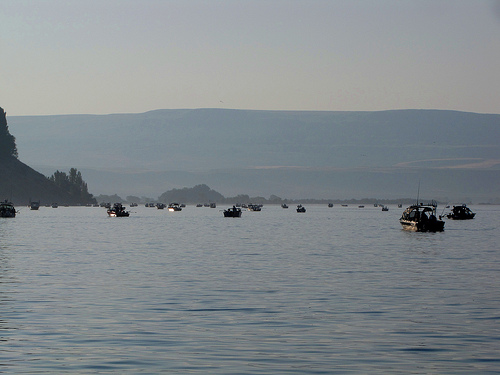
Columbia River could be a bright spot especially for sockeye
The early summer salmon fisheries for Chinook and sockeye along the Upper Columbia River from Wenatchee to Chelan Falls and up to Brewster has been a boon the past several years with good to excellent catches depending on the timing.
The 2024 Upper Columbia summer Chinook salmon return is a promising 53,000 down from a forecast of 85,400 and near an actual return of 54,722 in 2023 and 56,300 and 78,444 in 2022.
Fishing for summer Chinook was good when it opened on July 1 in 2023 and the entire month of July is usually the best period but can be productive into early August as schools of fish move upstream and hold in cooler water. Anglers can track when it is time to go by checking the dam counts along the Columbia.
The hype around the Upper Columbia sockeye fishery may onto hold its reputation again during the summer of 2024 as a promising forecast of 401,700 is expected to jam the river. The 2024 Lake Wenatchee sockeye forecast is up 23% and the Okanogan sockeye forecast is up 16% over the recent 10-year average.
The forecast in 2023 of 234,500 was waxed by the actual return of 329,040. This also came off the heels in 2022 when the unexpected actual sockeye salmon return to the Upper Columbia topped 664,935 (198,700 was the preseason forecast) and was the largest run since Bonneville Dam was erected in 1938. The 2024 forecast is also well above the 2020 return of 345,018 which was the highest return since 2016.
The key driver for the upper-river fisheries is an Okanogan sockeye salmon run forecast of 288,700 in 2024 (187,400 was forecast with an actual return of 179,655 in 2023, and 175,700 and 513,317 in 2022).
Many of the sockeye linger in the Brewster Pool, a popular early-summer deep-water salmon fishing location on Upper Columbia.
Sockeye migrate from its confluence just below Chief Joseph Dam, north into its headwater lakes in British Columbia that is known for a notoriously warm water barrier and changing river flow patterns in the summer. In 2023 and 2022, colder water throughout the mid- and upper-Columbia had sockeye darting straight up into the Brewster Pool generating good fishing in early summer and into August.
The summer-migrating sockeye are learning to adapt their upstream migration timing in recent years therefore most fish returns are peaking sooner than later in the summer. Over the past few decades, the run would peak by early July, but it’s shifted to late June and has resulted in higher sockeye survival in recent years.
The Lake Wenatchee sockeye salmon forecast is also promising with a whopping 97,000 up from a 44,300 forecast in 2023 with an actual massive return of 146,875. The 2024 forecast is well above the spawning escapement objective of 23,000 at Tumwater Dam, and if that happens look for an excellent late-summer sport fishery in the lake.
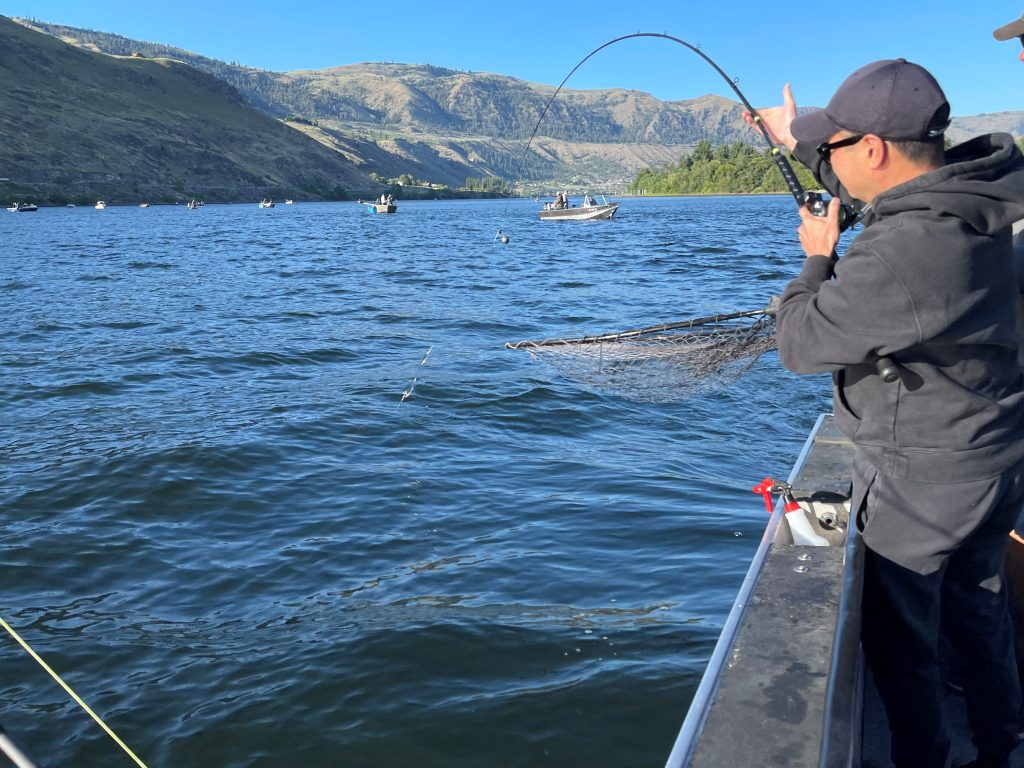
Those summer returns will be followed on the heels of the Columbia River fall Chinook forecast, which appears to be just a hair better from the previous season.
The Columbia River fall Chinook forecast is 547,800 compared to forecast of 547,400 and an actual return of 720,237 in 2023. The 2023 forecast is like the recent five-year average return of about 564,300. A slightly higher allowable exploitation rate – which is the maximum allowed proportion of Chinook that can be removed by a fishery – on tule Chinook, and limitations on other Chinook stocks must be closely considered across all fisheries.
The bulk of the fall Chinook return is 129,800 for Bonneville Pool hatchery (136,100 was 2023 forecast with an actual return of 198,864) and lower than last year’s actual return, about 105% of the five-year average return; and 258,300 for upriver bright (272,400 and 338,991) and is lower than last year’s actual return, about 96% of the five-year average return.
A breakdown of the other fall Chinook forecast shows 85,500 for lower river hatchery (71,100 and 87,127 in 2023) and is like last year’s actual return, and about 114% of the five-year average return; 10,500 for lower river wild (8,600 and 11,415) and is like last year’s actual return, about 85% of the five-year average return; 2,400 lower river bright (4,300 and 3,160) and improved over last year’s actual return and about 40% of the five-year average; 61,000 for pool upriver bright (48,300 and 78,938) and lower than last year’s actual return, about 82% of the five-year average return; and 300 for select area bright (600 and 1,742) and is lower than last year’s actual return, about 23% of the five-year average return. Forecasts for the Snake River wild wasn’t available but the 2023 forecast was 13,300.
In February, the Oregon Production Index – which provides ocean coho abundance forecasts – was released and revealed an estimated 699,900 coho to arrive off the Washington coast. That is well below the forecast of 1,135,700 in 2023.
The Columbia River subtotal forecast is 356,900 coho compared to 809,500 in 2023. These are the coho that drives the highly popular Buoy-10 fishery at the mouth of the Lower Columbia River and the mainstem and its tributaries in late summer and fall. The much lower coho forecast bound to the Columbia River likely means less ocean coho fishing opportunity.
The fall Chinook and coho returns destined to the Columbia River are also the bread and butter for ocean fisheries off Neah Bay, La Push, Westport and Ilwaco and in the Columbia River from Buoy 10 upstream.
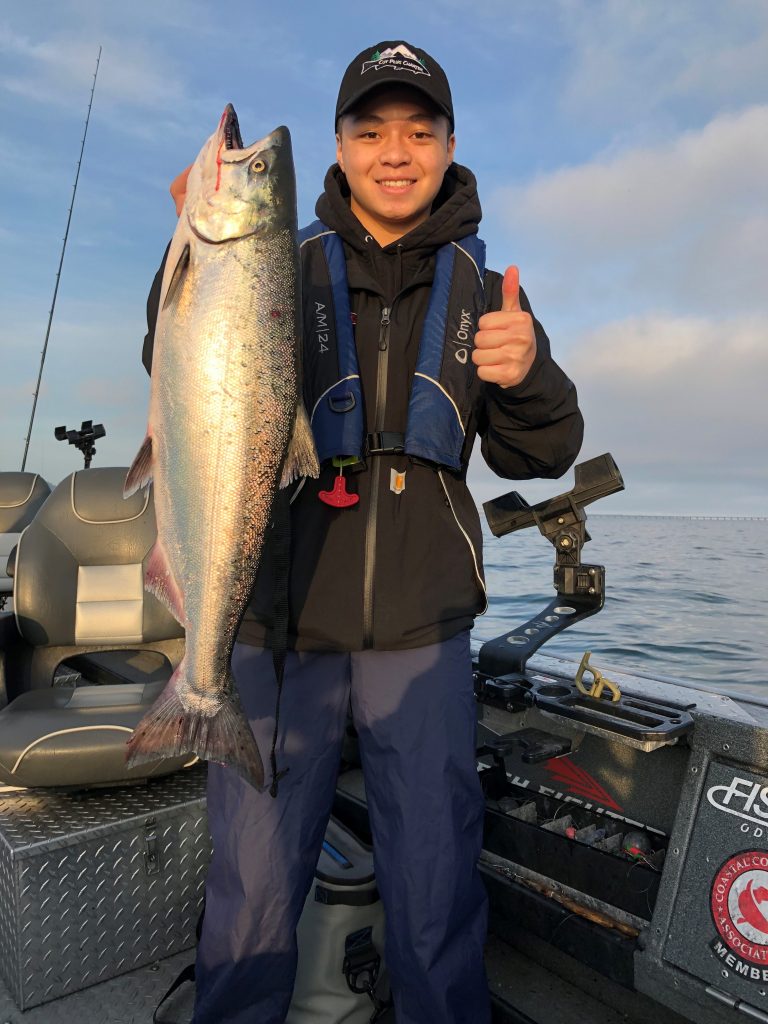
Three ocean salmon season options decided soon
The Pacific Fishery Management Council (PFMC) will host meetings from March 6-11 in Fresno, Calif., to develop three proposed ocean salmon season and quota options for waters three to 200 miles off the Washington coast.
The first North of Falcon hybrid public meeting is March 13, 9 a.m., at the Office Building 2 Auditorium, 1115 Washington St. S.E. in Olympia, followed by a second NOF hybrid public meeting on March 27, 9 a.m., at the Lynnwood Embassy Suites.
At the two NOF meetings, the discussion includes management objectives and preliminary fishery proposals for sport and commercial fisheries in Puget Sound and coastal Washington, with limited discussion of the Columbia River and ocean fisheries.
All fishing seasons will be finalized at the PFMC meetings on April 6-11 in Seattle. There are several other meetings across the state where the public can participate. For a complete list of meetings, go to https://wdfw.wa.gov/fishing/management/north-falcon/public-meetings
Marine salmon fishing options in March and April
Salmon anglers who can’t wait until summertime to go salmon fishing, have several choices popping up on the near horizon including one that is currently open.
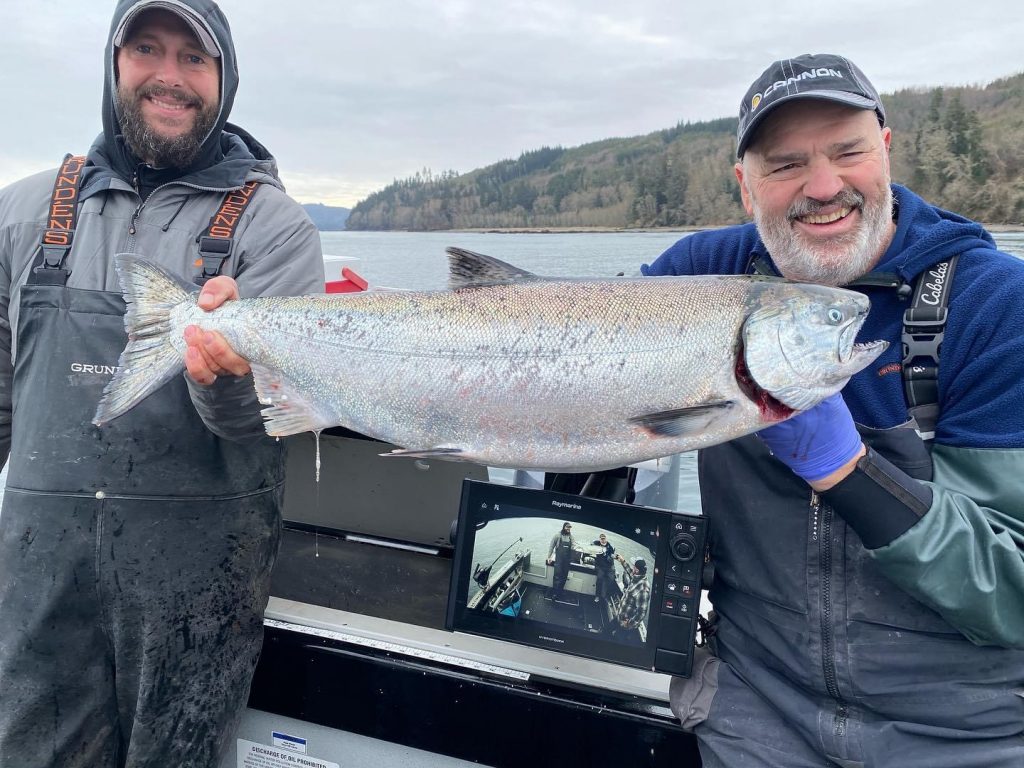
Central Puget Sound (Marine Area 10) and south-central Puget Sound (Marine Area 11) open for hatchery winter Chinook fishing on a Wednesdays through Saturdays schedule each week from March 1 through April 15 excluding year-round piers. Then Sekiu-Pillar Point (Marine Area 5) in the western Strait of Juan de Fuca opens on April 1-30.
Anglers should take note that while there are closing dates, each area could close sooner than expected, so making plans to head on the front end will likely guarantee you time on the water.
The reason behind that is because WDFW manages the seasons either by Chinook catch quotas or guidelines as well as impacts of wild unmarked fish encounters or higher sub-legal – Chinook under the 22-inch minimum size limit – catch rates.
Another option not driven by any premature closure is southern Puget Sound (Marine Area 13) south of the Narrows Bridge and is open right now for salmon fishing. Anglers in deep South Sound have reported fair catches of winter hatchery Chinook.
No matter where you plan to fish, the key to success in the winter is locating herring and candlefish baitfish schools the salmon feed on. Tidal influence and when a slack tide occur also dictates when to be on the water.
(Mark Yuasa is a Washington Department of Fish and Wildlife Communications Manager. He also has contributed numerous blogs to the KIRO/ESPN The Outdoor Line and was the outdoor reporter at The Seattle Times for 28 years.)

